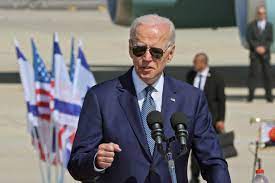WELLINGTON/TOKYO: Asia is experiencing a new wave of coronavirus infections, prompting warnings for residents from New Zealand to Japan to take precautions to slow the outbreak and prevent the strain on healthcare systems.
Authorities dealing with the economic effects of previous waves of the pandemic while attempting to avoid extending or reinstating unpopular restrictions face a new challenge as a result of the renewed surge in cases, which are mostly of the BA.4/5 Omicron variants.

In an effort to relieve pressure on the nation’s health system, which is dealing with an influx of COVID and influenza patients during the southern hemisphere winter, the New Zealand government on Thursday announced free masks and rapid antigen tests.
Ayesha Verrall, Minister for COVID-19 Response, stated in a statement that “there is no doubt the combination of a spike in COVID-19 cases and hospitalizations, the worst flu season in recent memory, and corresponding staff absences are putting health workers and the entire health system under extreme pressure.”
Nearly 69,000 people in New Zealand, which has a population of 5.1 million, are currently infected. 765 of those cases are hospitalised, which has led to longer wait times and cancelled surgeries.
New COVID-19 cases in Japan have risen to levels not seen since the beginning of the year. The government has urged people to exercise extra caution in advance of a forthcoming long weekend and impending summer school breaks.
According to a government spokesperson, Japan reported nearly 95,000 cases on Wednesday, and the number of newly infected patients has increased 2.14-fold since the previous week.
At the beginning of a committee meeting on the coronavirus, Health Minister Shigeyuki Goto stated, “The number of new cases is rising in every prefecture in Japan, and it seems to be rapidly spreading.”
Tokyo increased its alertness to the highest possible level.
Tokyo Governor Yuriko Koike stated at a meeting that “we will hold a task force meeting tomorrow to decide on measures to be taken this summer, taking into consideration the national trend and the opinions of experts.”
South Korea, like New Zealand, received praise for its quick action during the pandemic, but by Wednesday,
The number of new daily cases in South Korea is expected to reach 200,000 by the middle to end of August. Booster vaccinations are being offered more widely, but new curbs are not being planned.
Australia issued a warning that it could experience its worst COVID-19 outbreak in the coming weeks, caused by variants of the BA.4/5 Omicron virus. Authorities predicted “millions” of new infections but disallowed any stringent controls to stop the spread.
Federal Health Minister Mark Butler said on Thursday that lockdowns and other similar situations are no longer necessary, adding that “we’ve moved past that.” Butler also urged Australians to think about working from home once more.
Hospital admissions in Australia are already close to what they were during the most recent major Omicron outbreak earlier this year, and the country’s health system is also being stressed by high COVID and influenza rates.
Infections in Indonesia have increased, reaching their highest level since March, while cases in Thailand have trended downward.
The Philippines continues to experience few new infections and hospitalizations, but the government has issued a warning that the number of cases could at least 20-fold by the end of the month.
Manila is urging more people to get their booster shots because, as of July 12, according to data from the health ministry, only 25% of eligible adults had received their first booster.
Mainland China reported more than 300 locally transmitted COVID infections per day on average in July compared to about 70 in June. This increase is due to Beijing’s strict “dynamic COVID-zero” policy, which prevents hospital overcrowding.



